22.7.-28.8.11
An exhibition about contemporary Eastern Europe.
Part of the "Your Periphery Is My Center" exhibition series.
It is a lot about crossing borders in this exhibition curated by Rael Artel. Most of all geographical borders in Eastern Europe:
Crossing the borders from Latvia to UK in search for a future with love and money.
Crossing the former closed border from Serbia to Croatia in search for a lost past.
Crossing the border to the world of the ugly and the outcasts.
Crossing the border to Finland and Norway for work.
Crossing the borders of time and space in Chisniau, Moldova.
Many different stories are told, many are familiar, but with a certain twist of black humour. Some stories are certainly fictious, like the drawing of the the teacher so ugly she makes the students throw up. But sometimes life is stranger than fiction, like how the street names of Chisniau have changed so much that nobody knowns them anymore.
Here are some of the highlights:
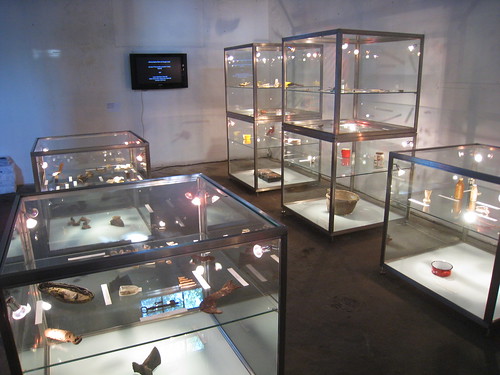
Gergely Laszló & Katarina Śević: Home Museum
After years with a closed border between Serbia and Croatia, Serbians were finally allowed to visit their summer houses in Croatia. In the meantime several people have used the houses. When the original owners returned to their house they had no idea what had happened in the meantime, they had only clues. The garbage and leftovers become a documentary of what happened on the other side of the border.
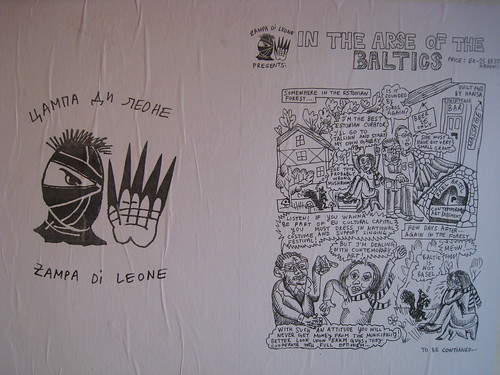
Zampa di Leone: Selected drawings
The cartoons of Zampa di Leone poke fun at the art world in a rough and brutal way. In this one a curator from the Estonian forest (an obvious hint to this exhibition's curator) does not get funding as her plans are not mainstream enough. Art life in the Baltics is not like in Basel.
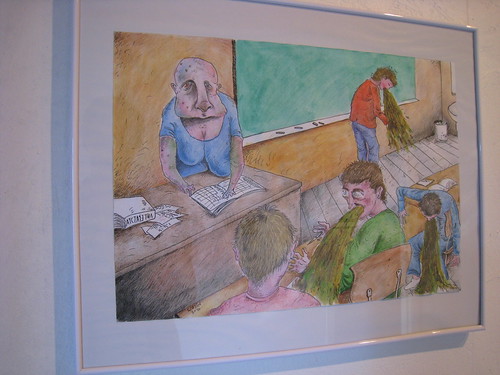
Alexei Gordin: Disgusting Teacher
The disgusting and repulsive drawings by Alexei Gordin contain loads of black humour, leading us into a world of outcasts, horrible situations and the underworld of any town.
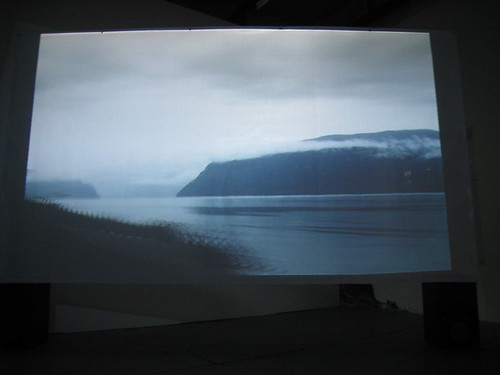
Wojtek Doroszuk: Special Features
Here we meet Norwegian nature and Polish workers. They travel to Norway dreaming of beautiful nature and easily earned money, but meet hard work and problematic work conditions.

Flo Kasearu: Basic Navigation for Chisinau
As the street names were renamed for every change of politics and rulers, the inhabitants do not know the names of the streets anymore. As the Estonian artist ask for different contemporary probable names, the moldovians struggle to be able to show the right direction. The traveller is lost, but the inhabitants are lost as well. She asks for names like "Liberty", "Dalai Lama", "Nobel", but they are nowhere to be found.
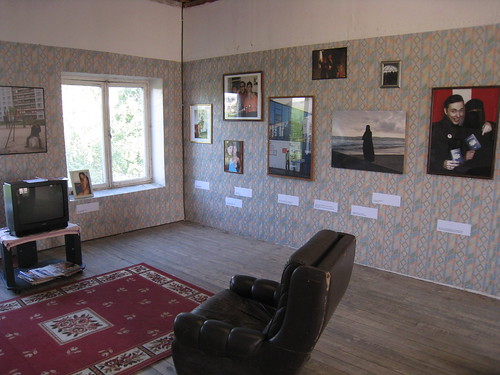
Arnis Balćus: Contemporary Latvians
A typical Latvian from a typical Latvian family follows the typical pattern of travelling abroad in search of a better future. But his future turns out to be rather untypical. The story is laid out like a family album in frames on the wall in a typical Latvian living room. He starts out in a Latvian school uniform, with a normal family, even a rich relative with BMW. But he travels to the UK, gets a job and a girlfriend. But in the end he marries a muslim woman, and instead of them finding a future abroad, she becomes a Latvian citizen. He is not the only one gaining from his border crossing.

Anna-Stina Treumund: Loser
A female dressed as a man talks about himself. He is an Estonian, working in Finland, having several kids with several women, and he hates foreigners and homosexuals. The movie is showing a normal interview with a typical Estonian man. But in the background is the laughter of a tv-comedy, turning this into a comedy. The typical Estonian becomes a parody.
*
Rael Artel has curated an exhibition with a wide variety of artists and art, all well fitting to the theme. In Estonia many of the stories told are like familiar stories about someone you know. Had the exhibition been displayed in for example Norway, these would be stories about others, about East Europeans. I believe it would work well also in that context, maybe it would even be stronger.
What gets lost in transition? What do you lose when you cross a border? Do you lose your past or your future? Or your identity? Judging from this exhibition you rather gain something in transition: a past, a future or an identity.
Exhibition page here